The first time I went to Ilocandia was in 2005 when we embarked on a Northern Luzon road trip covering Pagudpud, Kalinga and Cagayan. There wasn’t enough time to explore the other parts of Ilocos apart from Pagudpud so I made a promise to return.
I went back during the Holy Week of 2011, where I endured the holiday exodus and 12-hour bus ride from Manila to Laoag with the main purpose of visiting old churches. I braved the throngs of commuters, the summer heat and the uncertainties of not having a concrete plan and itinerary.
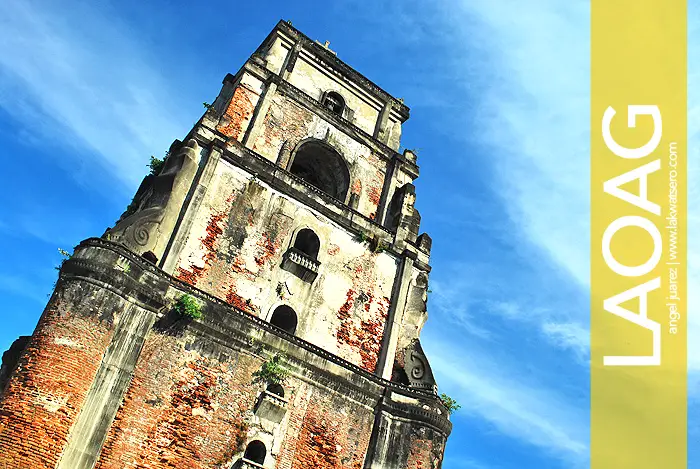
So I found myself in Laoag at noon of Maundy Thursday, and immediately fell in love with its quaintness and beauty.
I stayed in a transient room for P300 per night, it is conveniently located near the downtown. It would serve as my home for the entire trip. Dora, the owner of the room was already waiting for me when I arrived. I had my lunch with them before taking a mid-day siesta prior tony planned Visit Iglesia.
Due to limited mode of transportation (public transportation is scarce during Holy Week specially on Good Friday), I needed to trim down and carefully select the churches that I visited in the span of three days. Here goes!
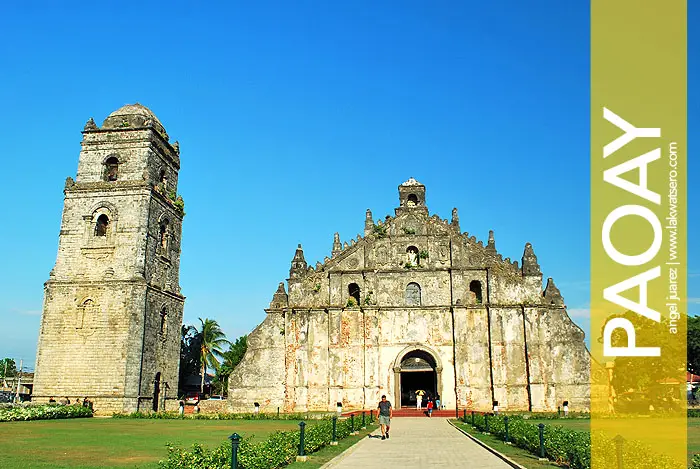
Day 1: Paoay and San Nicolas (Ilocos Norte)
Saint Augustine Church, Paoay
Around 16 kilometers south of Laoag is the town of Paoay, home to St. Augustine Church or simply Paoay Church, a UNESCO World Heritage Site.
The magnificent church stands proud in an open plaza of the town. While various published articles site contradicting numbers, the National Historical Commission of the Philippines’ records show that the parish was founded by Augustinian Missionaries in 1593. It is believed that the church’s planning and construction started in late 1600′s to early 1700′s, it was used even before it was fully completed and officially inaugurated in February 28, 1896. The church, aside from its beauty played a vital role during the Philippine revolution against Spain and Japanese occupation of the Philippines. Today, the majestic Paoay Church is an icon and a landmark, it was inscribed in UNESCO WHS in 1995 as one of the four Baroque Churches of the Philippines.
Paoay is half-an-hour ride from Laoag, local jeepneys ply Laoag-Batac-Paoay route that will take you right in front of the church for P34.00 from Ilocos Norte capitol. The church is fronting northwest, so the best time to go is on the afternoon for a better picture of the church:)
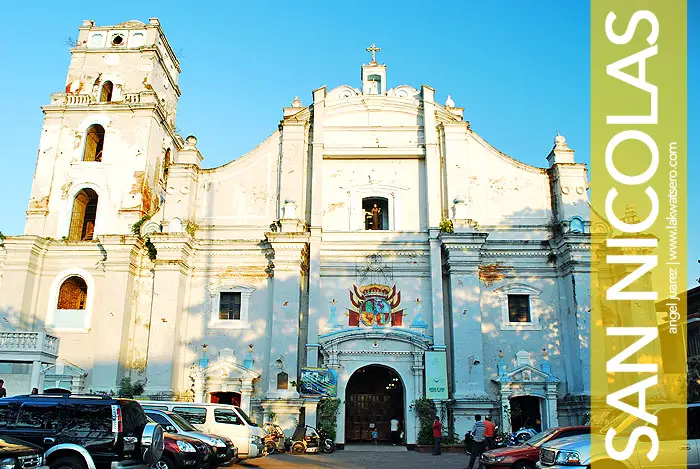
Saint Nicolas de Tolentino Church, San Nicolas
The town of San Nicolas is the neighboring town of Laoag to the south. The town’s church, St. Nicolas de Tolentino, situated along the main highway is among the oldest in the region.
There’s not much information available on the history of St. Nicolas de Tolentino Church, the only known facts about the church is that was built in 1701 by Augustinian Missionaries under the Diocese of Nueva Segovia and later went to the Diocese of Laoag when it was formed in 1961.
San Nicolas and Laoag is separated only by Gilbert Bridge and just a short ride for only minimum fare from Laoag. The church has an open space in front that serves as parking space, it is facing northwest and gets a good glimpse of sunlight on the afternoon.
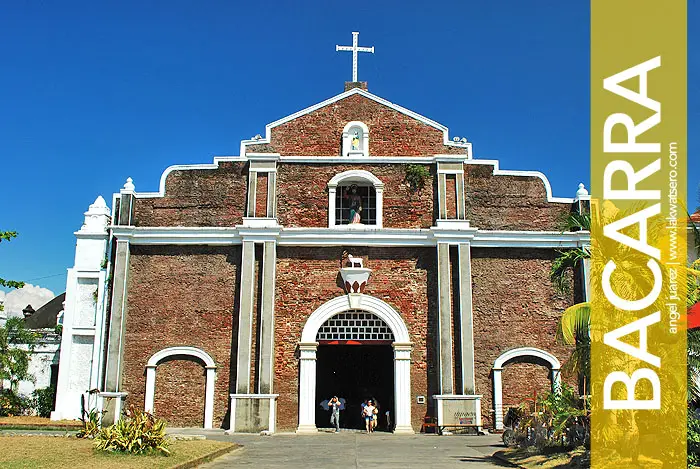
Day 2: Bacarra and Laoag (Ilocos Norte)
Bacarra
Next town to the north of Laoag is the town of Bacarra, only separated by bridge from the city capital. Located in the town of Bacarra is one of the oldest churches and bell towers in the country.
Like any other parishes in Ilocos Region, the parish of Bacarra was established by Augustinian Missionaries. The construction of the original church started in 1593 and inaugurated in 1782 named after the town’s Patron Saint Andrew. It was destroyed by an earthquake of 1983, reconstructed and inaugurated the year after.
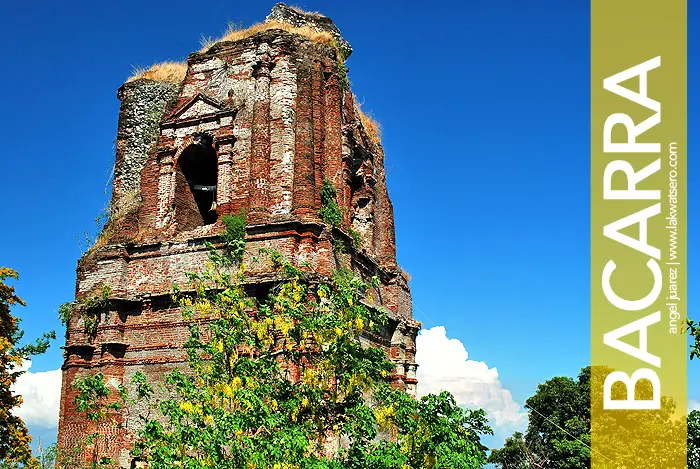
The ruins of the old bell tower of Bacarra, referred as Torre Ti Bacarra, is located beside the church. Built during the term of Fray Pedro Berger in early 1830’s, it is made of bricks from coral blocks. It survived countless earthquakes and typhoons although the top portion is already damaged. The original bell is still hanging in the tower and being used up to now using a cord.
Bacarra is also a short ride for only minimum fare from Laoag. The church has on open space and also fronting northwest, so the best time of the day to visit is in the afternoon.
Laoag
Laoag is the capital of Ilocos Norte and the seat of Diocese of Laoag that covers the whole of Ilocos Norte. It is once part of the Diocese of Nueva Segovia before it was carved out in 1961. St. William the Hermit is its patron saint, and a cathedral of the city was named after him.
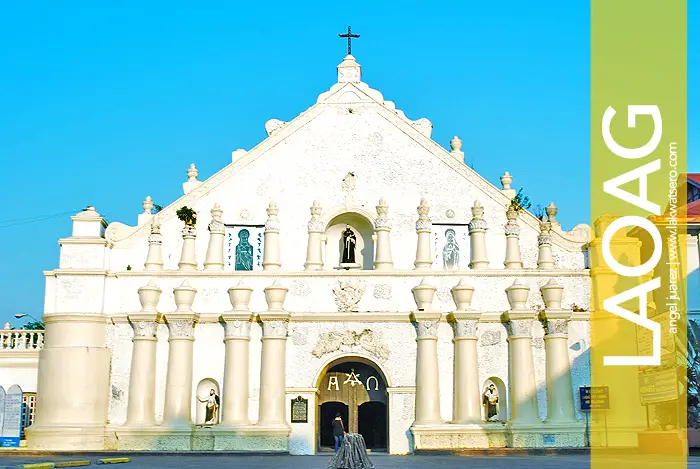
The Parish of Laoag was also established by Augustinian missionaries who originally built the church in 1580. The current structure of Italian Renaissance design started its construction in 1612. Its original belfry is situated across the street and now known as the Sinking Bell Tower of Laoag. Standing 45-meters from the ground, the bell tower has sunk considerably since its erection.
Today, the St. William Cathedral and its sinking bell tower are the most popular icons and landmarks of the city.
The cathedral sits in an open space that serves as a parking space. It is fronting northwest and the facade gets a good touch of sunlight in the afternoon.
Day 3: Sta. Maria, Vigan and Bantay (Ilocos Sur)
Sta. Maria
Three hours away from Laoag and half-an-hour from Vigan is the quaint town of Sta. Maria in Ilocos Sur. It may not be a high profile town, but it is home to a lot of interesting spots – Pinsan Waterfalls, Benedictine Sisters Convent, heritage houses and structures, parks and great beaches.
But the pride of the town is its UNESCO World Heritage Site Church, the Nuestra Senora dela Asuncion Church of Sta. Maria or simply Sta. Maria dela Assunta Church, one of the four Baroque Churches of the Philippines.
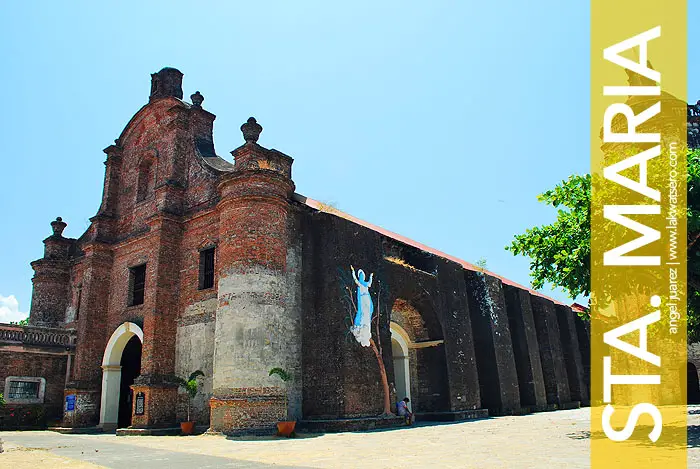
Formerly a part of the Parish of Narvacan before it gained its independence as a parish in 1760, the church was originally a chapel of the of Narvacan until the creation of the Parish of Sta. Maria. The original church and its detached hexagonal belfry were built in 1810, the church was remodeled from 1863 to 1871 to what it is today, with its belfry slightly leaned.
The elevated church sits on a hill with three flights of stairways from the main road. The other side of the church has another stairway that leads to an abandoned cemetery. A few meters in front of the church is an old convent connected to the church by a brick bridge. The church is supported by buttresses on its sides in case of earthquake.
With a building obstructing its grand view, it is hard to get a good picture of the facade without an ultra wide lens camera. Nonetheless, the church’s imposing beauty gives justice to any image taken in any angle. It is facing north and the facade gets good sunlight in the morning.
The town of Sta. Maria can be reached by riding a Manila bound buses from Laoag for P160 (A/C bus). From Vigan, vans are available for P50.00. Local jeepneys also ply Vigan – Sta. Maria route.
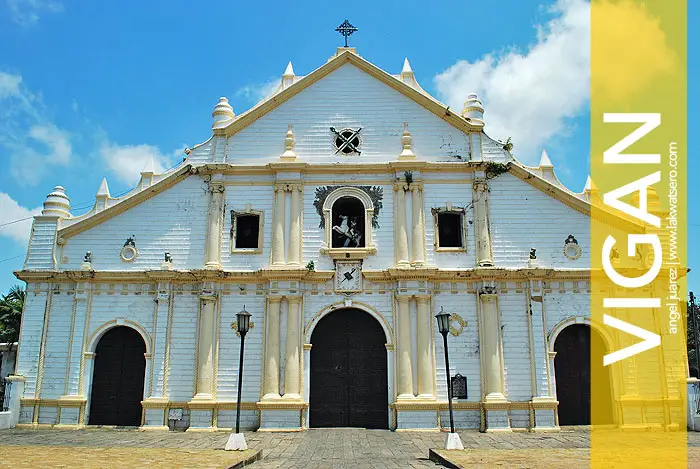
Vigan
The seat of the Diocese of Nueva Segovia and the heritage city of the north as inscribed in the UNESCO World Heritage Site List in 1999, the City of Vigan will take everyone back to the Spanish time being one of the remaining Hispanic towns in the Philippines.
Its church, the St. Paul Metropolitan Cathedral or simply known as Vigan Cathedral is fronting Plaza Salcedo and the Ilocos Sur Capitol Building. The original church was ordered built in 1574 by Juan de Salcedo. Reconstructed and remodeled in 1641 but destroyed by an earthquake. The present structure was built from 1790 to 1800 with a bell tower 10 meters across the church. Like Paoay Church and Sta. Maria Church, it has thick buttresses on its sides to support the structure during earthquakes.
Vigan Cathedral sits in an open space fronting the plaza. It is facing northwest, the facade gets a good touch of sunlight in the afternoon. Vigan is two hours away from Laoag.
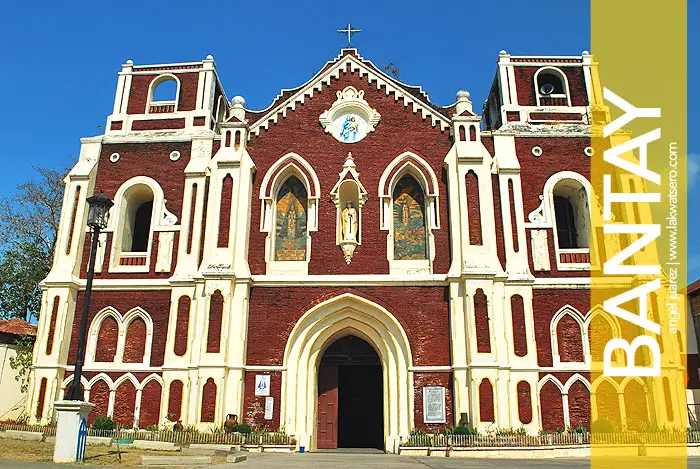
Bantay
Bantay, a neighboring town of Vigan City to the east, is one of the eldest parishes in the region and the country. Its icon, the brick red church of St. Augustine and its well-preserved Spanish era bell tower.
Bantay Church and its bell tower is one of those old structures of Ilocos without recognition from National Historical Institute of the Philippines, not even a marker to commemorate its role in history, information are also scarce. But it is known that the original church and belfry was built in 1590 but damaged during the World War II and only the original bell tower survived. What stands now is a reconstructed structure of a church that was built in 1950.
The old bell tower, located on a hill around 90 meters from the church is made up bricks. It is still in good condition with the original bells still hanging on top. The church allows visitors to climb the bell tower, where a good view of the surroundings can be seen – the Bantay Cemetery, the town of Vigan and the Cordillera mountain range from afar.
The church can be easily reached from the main highway of Bantay. The best time to visit is on the afternoon because the church is facing west.
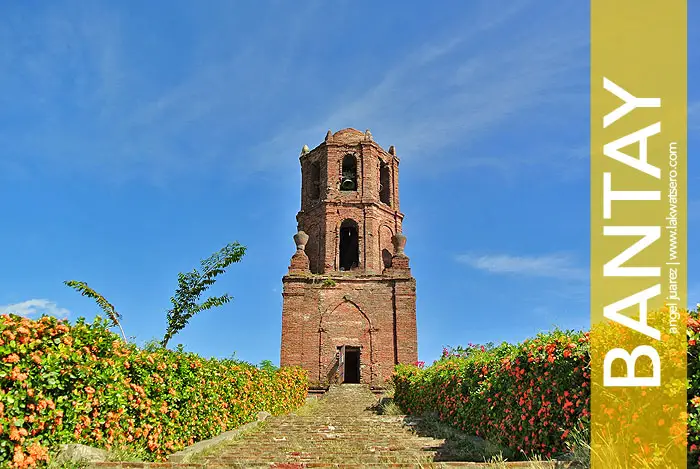
Seven churches, seven towns, two provinces, three UNESCO World Heritage Sites all in the span of three days. It was one amazing trip I really enjoyed. I got to explore and fell in love with Ilocandia and I can’t wait to be back to explore more.
Ilocandia is Love!
Where to Stay in Laoag
Top-Rated / Highly Recommended Accommodations in Laoag
|
Fort Ilocandia Resort Hotel |
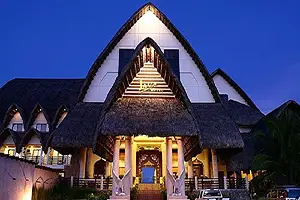
Java Hotel |
Top-Rated Budget Accommodations in Laoag
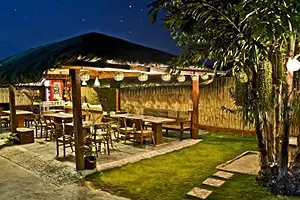
AA Travellers Pad Hotel |
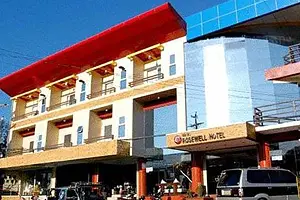
Ilocos Rosewell Hotel |
Top-Rated / Highly Reccomended Accommodations in Vigan
|
Hotel Veneto de Vigan |
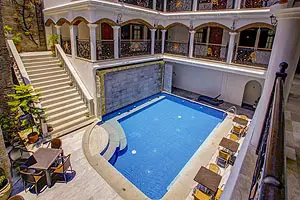
Hotel Luna |
Top-Rated Budget Accommodations in Vigan
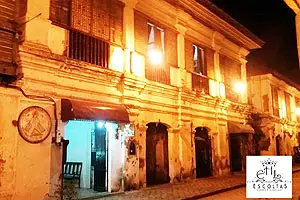
Escolta’s Homey Lodge |
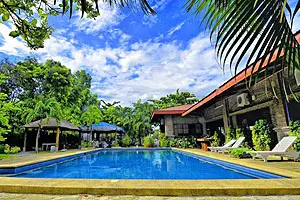
Hotel ni Among |
How to Get to Ilocos
Manila to Ilocos
Laoag is a 8 to 9-hour ride from Manila while Vigan is around 7 hours. Several bus lines serve the route including Florida Bus Line, Partas Liner, Baliwag Transit and Fariñas Transit. The trip is via North Luzon Expressway and Manila North Road passing through the provinces of Bulacan, Pampanga, Tarlac, Pangasinan and La Union and Ilocos Sur, fare is around P600 – P700.
By air, Philippine Airlines and Cebu Pacific fly to Laoag daily from Manila, travel time is an hour. From Laoag International Airport, there are tricycles and public jeepneys that can take you to the city proper.
Clark to Ilocos
For those coming from Diosdado Macapagal International Airport in Clark Field, Pampanga, ride the shuttle or jeepney going to Dau Integrated Bus Terminal, fare is around P50. In Dau Terminal, look for buses going to Vigan and Laoag.
Baguio to Ilocos
There are numerous departures (buses and vans) daily from Baguio City Bus Terminal to Vigan and Laoag, travel time is not more than four hours, fare ranges from P200 – P300.
Tuguegarao to Ilocos
If you’re coming from Tuguegarao, GMW Liner and Florida Liner operate buses to Laoag, fare is not more than P300.00.
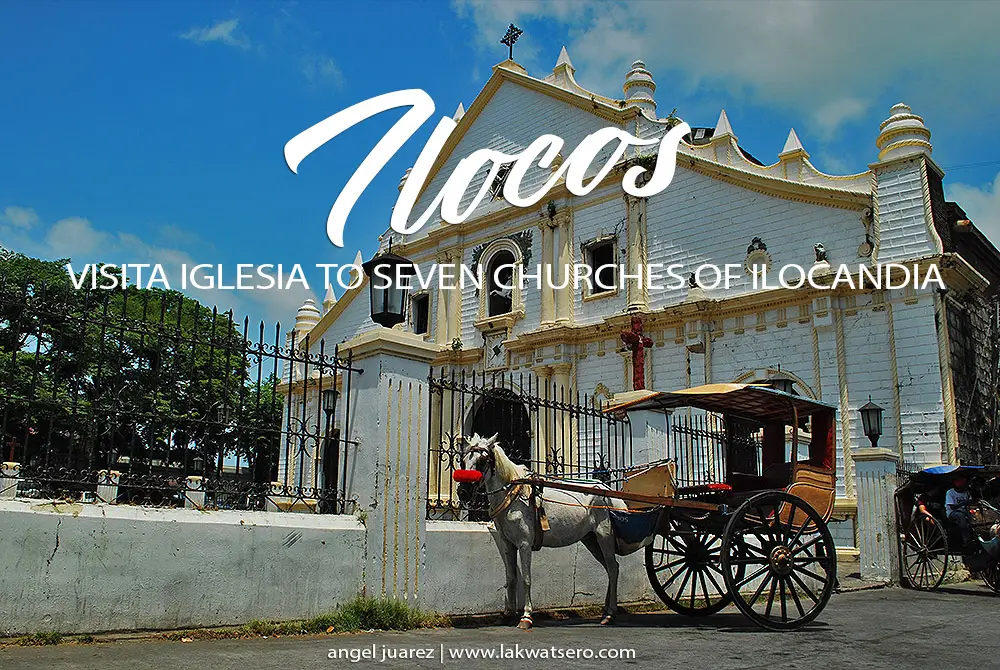
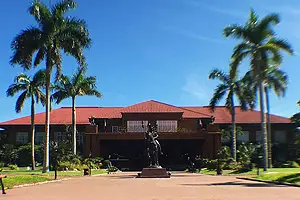
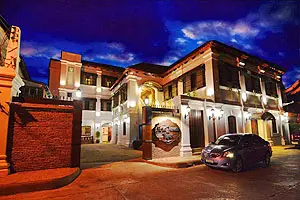
Angel, sama mo nman ako sa Vigan pag may trip kayo dun…namiss na kita….
coolness kuya at nalibot mu tlaga! ako need to go back to chck this all. hehe
Thank you Angel for these information. I will ve visiting Ilocos Norte next month, these are very helpful tips!
By the way, can I ask for the contact number of Dora? I need a place to stay for 1 night in Laoag… Thank you so much…